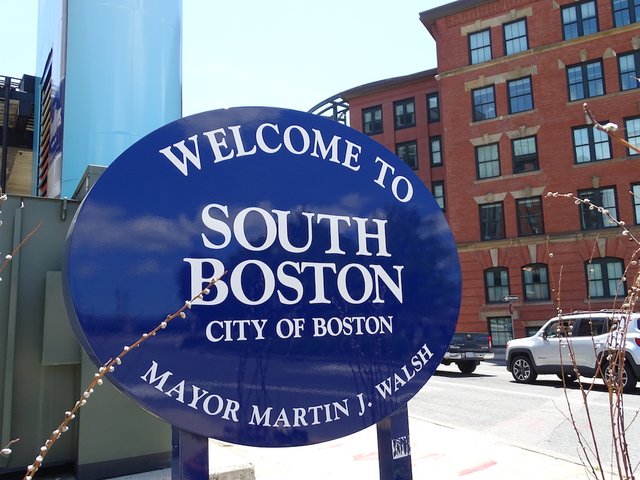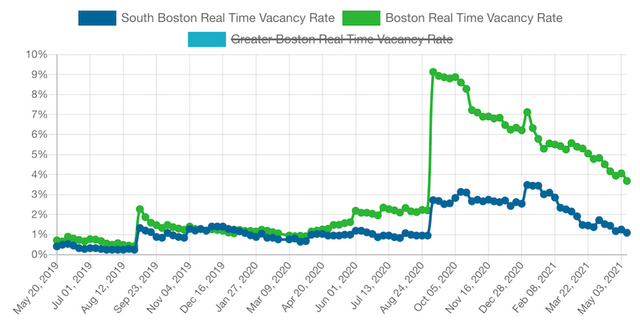
The South Boston apartment rental market has experienced an unusually turbulent year since the pandemic hit Boston. In a neighborhood widely considered to be one of Boston’s strongest rental markets, the vacancy rate in Southie ballooned to an unthinkable 3.5% in January of 2021 following nearly a decade long run under 1.5%.
Now it appears that relief is close in site for Southie’s rental supply. Since January, demand has picked up for South Boston apartments considerably. As of April 1, the vacancy rate had dropped down to 1.73%, roughly half of what it was in January of this year. That trend continued through most of April, and now the South Boston vacancy rate is sitting at a much healthier 1.09%.

Certainly the announcements from most major schools regarding the relegation of remote learning in Fall 2021 has restored apartment demand to many of Boston’s core neighborhoods. However, South Boston is known to be less affected by the ebb and flow of off-campus housing demand in Boston. Historically, South Boston’s vacancy does not exhibit the same high turnover as the neighborhoods located closer to Boston’s largest campuses.
Similar trends have been noted all over the city in the past few months. Interestingly, in the past 30 days, we’ve seen apartment demand pick up in many of Boston’s Downtown neighborhoods. In fact, the vacancy rate for Downtown Boston apartments has dropped from 25.38% on April 11, 2021 to 16.94% currently. In Beacon Hill, the vacancy rate for apartments went from 11.28% last month to 5.93% currently.
While vacancy rates have dropped in popular student enclaves like Fenway, Allston, and Mission Hill, no other neighborhoods have seen as big as a decrease in apartment supply than the aforementioned Downtown areas.
This leaves one question to be answered. Is this added demand coming from a replenished student population? Or are we seeing a revitalization of our business professional population renting near Downtown? Massachusetts has been a leader in vaccination distribution, and many corporations are requiring vaccines to return to work to reduce liability. So it’s not implausible to think that those who moved out of Downtown for remote work are now moving back closer to their Downtown offices.
Expect demand for off-campus housing to surge from the end of May to the 9/1 leasing date. This will likely bring South Boston’s vacancy rate to below 1% for the first time since August of 2020. South Boston’s vacancy rate of 1.09% is currently the second lowest apartment supply out of all neighborhoods in Boston, behind only Roslindale.
We will continue to monitor this story as it progresses.